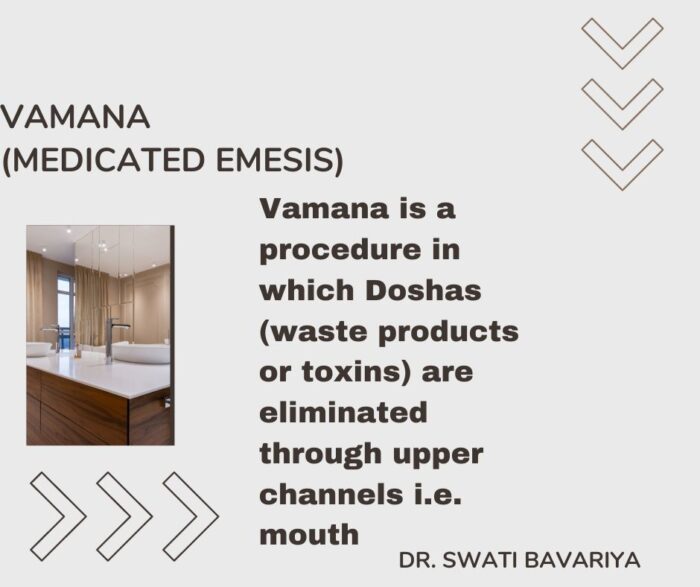Vamana is a therapeutic procedure in Ayurveda that involves controlled therapeutic emesis or induced vomiting. It is one of the five main procedures of Panchakarma, the Ayurvedic detoxification and rejuvenation therapy.
Vamana is primarily used to eliminate excess Kapha dosha, which is associated with mucous congestion, respiratory disorders, and certain metabolic imbalances. By inducing vomiting, Vamana aims to remove accumulated toxins (ama) and restore the balance of the doshas in the body.
The Vamana procedure typically follows a preparatory phase known as Snehana (oleation) and Swedana (sudation). During Snehana, the individual is administered medicated oils or ghee internally and externally to lubricate the tissues and facilitate the movement of toxins towards the digestive tract. Swedana involves inducing sweating through steam therapy or other methods to further prepare the body for the Vamana process.
Once the preparatory phase is completed, the person undergoing Vamana is given a specific herbal concoction or a medicated mixture to induce vomiting. The composition of the emetic substance is carefully determined by an Ayurvedic practitioner based on the individual’s constitution and specific imbalances.
The person drinks the emetic substance and, under the supervision of a trained practitioner, the vomiting is induced. The process is carried out in a controlled manner to ensure the safety and effectiveness of the procedure. During vomiting, the excess Kapha and accumulated toxins are expelled from the stomach and upper respiratory tract.
After the emesis, the individual is given specific post-procedure care, which may include dietary restrictions, rest, and herbal medications to support the detoxification process and balance the doshas.
Vamana is commonly used to address conditions such as chronic allergies, asthma, bronchitis, sinus congestion, skin disorders, obesity, and certain digestive disorders. It is important to note that Vamana should only be performed by a trained and experienced Ayurvedic practitioner, as it requires careful evaluation, monitoring, and individualized treatment planning.

